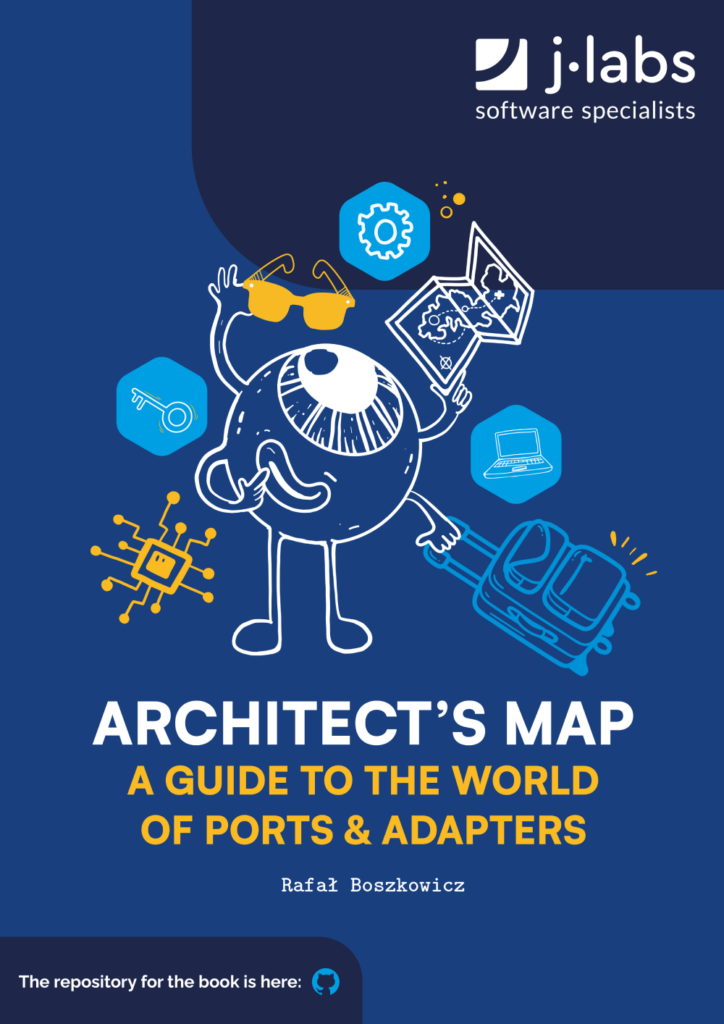Architect's Map - a journey around CQRS
- You must gather your...map, before venturing forth. Download our e-book and set off on a journey where we will guide you through key concepts and application architectures, focusing on CQRS!


Unsure which architecture to choose? Treat our e-book as a guide!
Choosing the right application architecture is crucial for its functioning and development. The book helps in understanding various architectures and selecting the right one for specific needs.
What will you find inside?
Rafał presents the criteria that should be considered when choosing an architecture: business requirements, scalability, performance, availability, reliability, security, flexibility, costs, team skills, time to market, and testability.
Inside, you’ll find discussions on different architectures, including:
- Monolithic – simple and suitable for small projects.
- Microservices – divided into independent services, ideal for large applications.
- Hexagonal – separates business logic from external interfaces.
- Layered – divided into layers, good for most business applications.
- MVC (Model-View-Controller) – commonly used in web applications.
- Event-Driven Architecture (EDA) – effective in asynchronous systems.
- SOA (Service-Oriented Architecture) – ideal for large corporate systems.
Rafał’s e-book focuses heavily on CQRS – Command Query Responsibility Segregation. CQRS is particularly useful in systems with high complexity and performance and scalability requirements. It separates write operations from read operations, allowing for optimization of each.
Download our e-book and discover:
- the basic principles of CQRS,
- guidelines and examples of CQRS application,
- when to use CQRS and when not necessarily.
